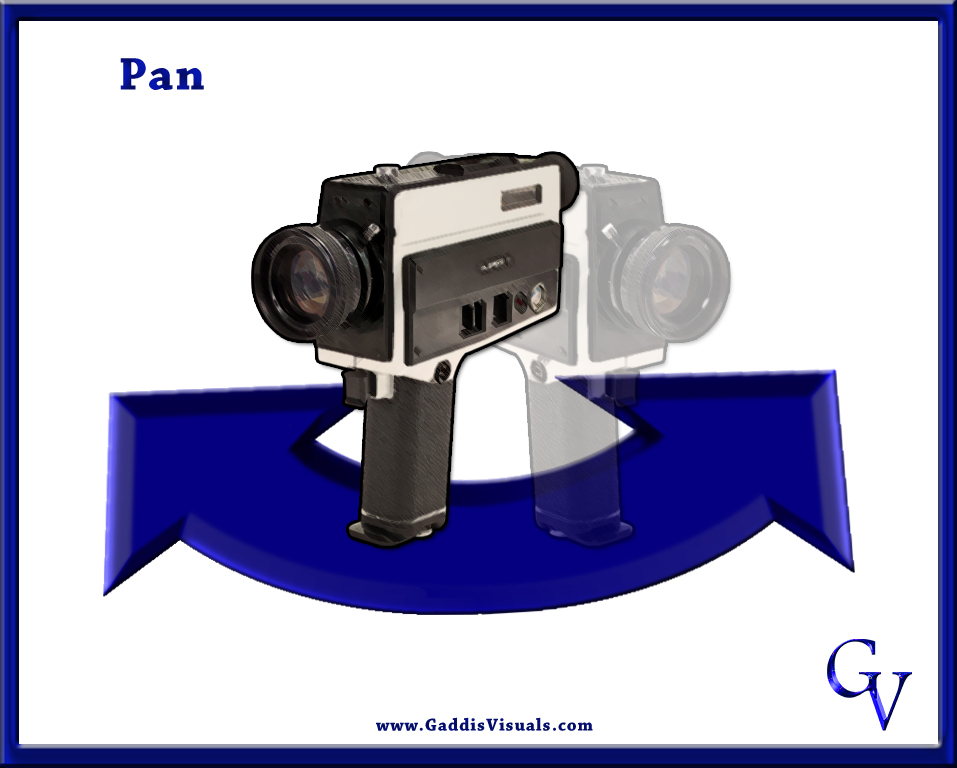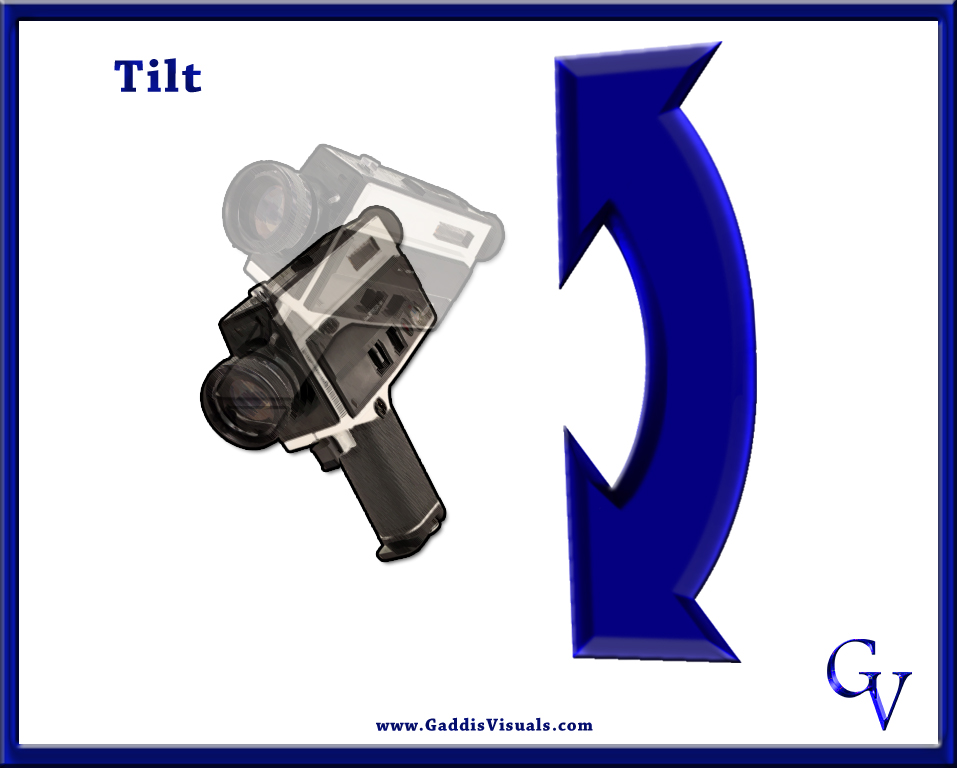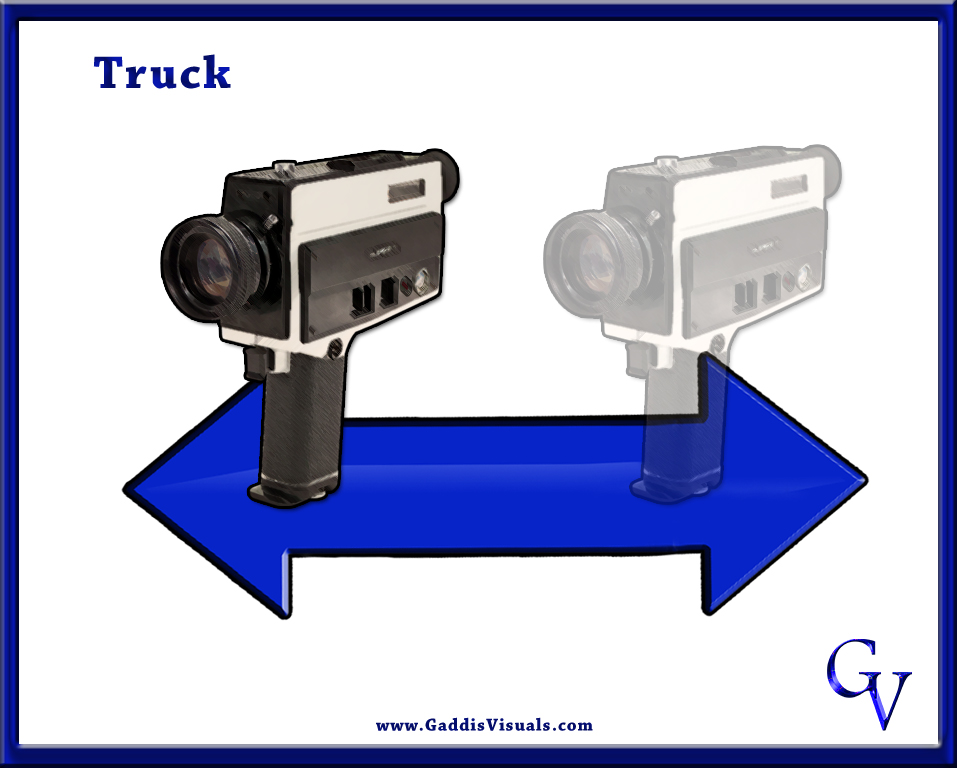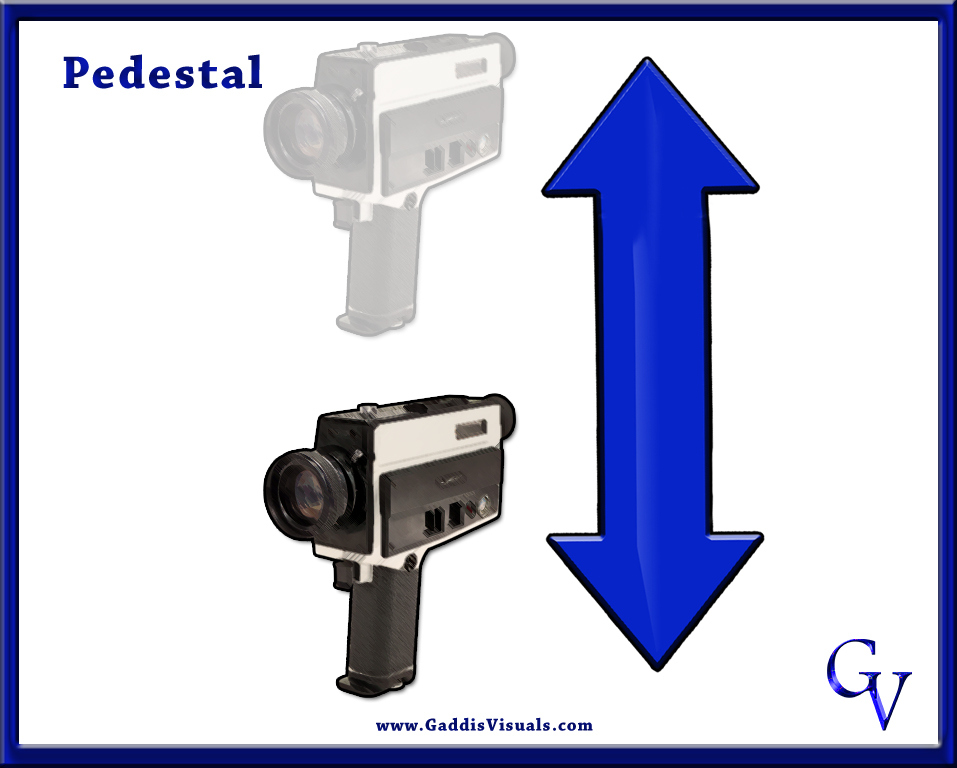Camera Movement
Camera movement can bring a story to life. It is used by a cinematographer to tell the director’s vision. It is very important to know these terms and effectively communicate with the director, or crew. Camera movement should be motivated. Just because you have the new piece of gear, doesn’t mean the story calls for it.
Pan
Pan – Pivoting the camera horizontally (Left or Right). Using a tripod will give smoother results but you can also pan operating the camera handheld or with a stabilizer.
Tilt
Tilt – Pivoting the camera vertically (Up or Down).
Dolly
Dolly – Moving the camera closer or further away from the subject (In or Out). This movement requires the camera to be set on tracks or wheels. You can also use a slider for this movement.
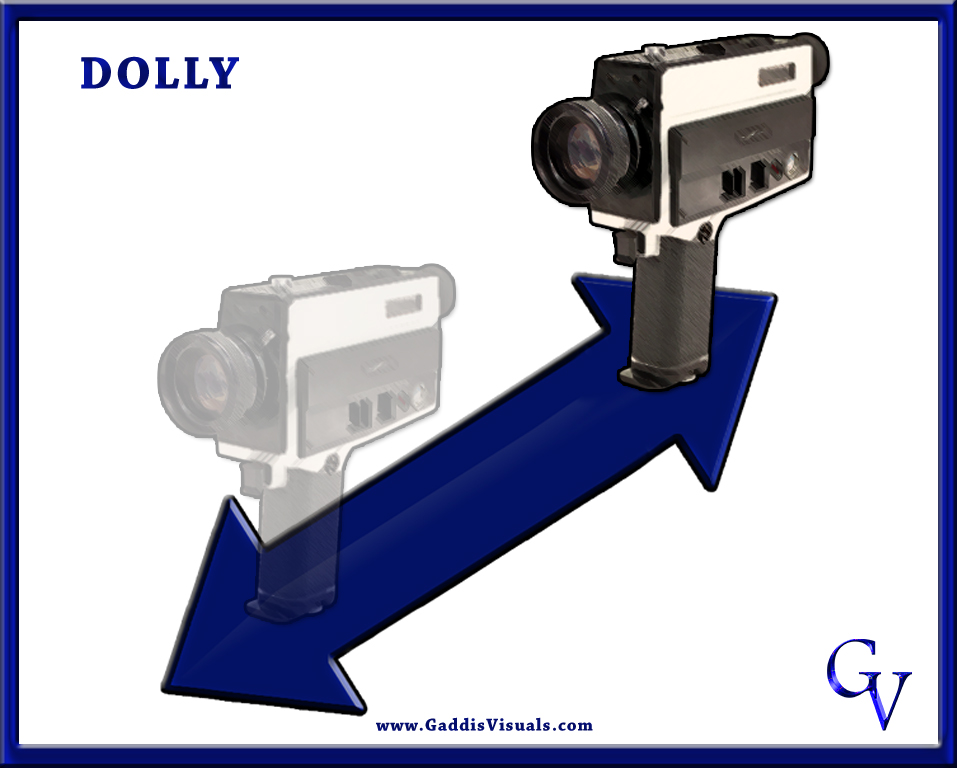
Trucking
Trucking – Moving the camera horizontally (Left or Right). This movement requires the camera to be set on tracks or wheels. You can also use a slider for this movement.
Pedestal
Ped or Pedestal – Moving the camera upwards or downwards (Up or Down). This move is usually done with a tripod. It also works really well if your slider can be set vertically.
Roll
Roll – Rotating the camera pointed at the same subject, on it’s z axis.
Other Camera Movements:
Crane/Boom
Crane or Boom shots are used with jibs and create sweeping motion. It also can help give a bird’s eye view on your subject.
Handheld
Handheld is used to show intensity. Fight scenes and action sequences use handheld to build excitement. From a film theory standpoint, you can also use handheld to portray a sense of instability.
Movement Using The Lens:
Zoom In or Out
Zooming In or Out is done with the lens and wouldn’t be considered moving the physical camera so it would not make this list. The zoom can draw attention or take it away from a subject depending on if you are zooming in or out.
Rack Focus
Rack Focus is when the focus shifts from one subject to another subject. It’s probably best to use a tripod to get a smooth shot. Having a focus puller helps greatly depending on your lens choice.
